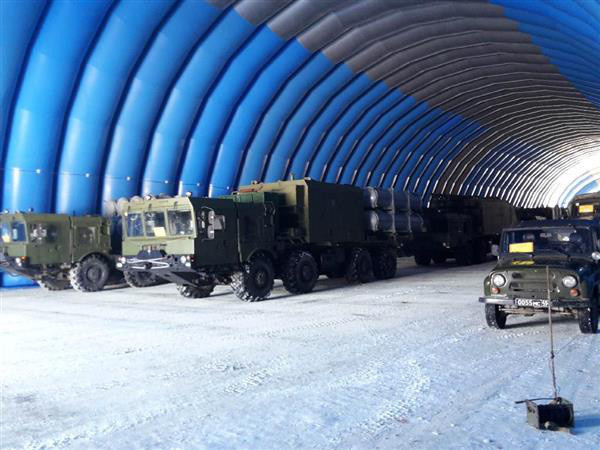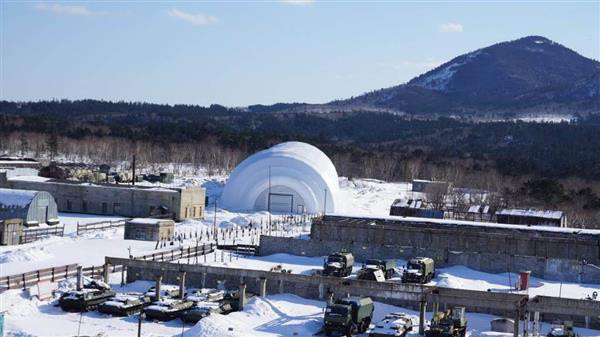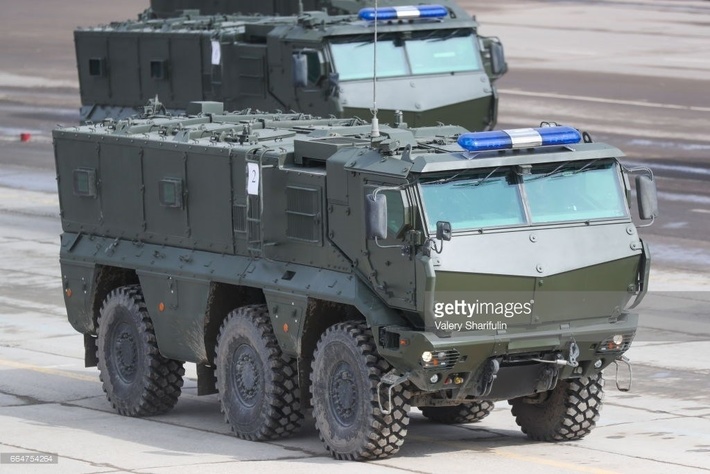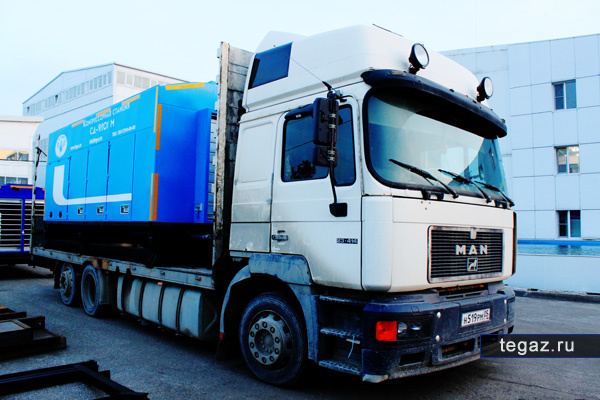Russia defence & technology updates
- Thread starter gadeshi
- Start date
More options
Who Replied?gadeshi
Senior Member
- Joined
- Jun 19, 2013
- Messages
- 9,223
- Likes
- 6,636
Moskva new generation metro train to enter service in Moscow metro:
https://sdelanounas.ru/blogs/92311/


https://sdelanounas.ru/blogs/92311/


gadeshi
Senior Member
- Joined
- Jun 19, 2013
- Messages
- 9,223
- Likes
- 6,636
A new The Great Silk Road has been introduced from Zabaikalsk to China:
https://sdelanounas.ru/blogs/92175/

https://sdelanounas.ru/blogs/92175/

gadeshi
Senior Member
- Joined
- Jun 19, 2013
- Messages
- 9,223
- Likes
- 6,636
gadeshi
Senior Member
- Joined
- Jun 19, 2013
- Messages
- 9,223
- Likes
- 6,636
Russian shore defence missile complexes Bal and Bastion on Kurila Islands in close:
https://sdelanounas.ru/blogs/92180/







https://sdelanounas.ru/blogs/92180/







gadeshi
Senior Member
- Joined
- Jun 19, 2013
- Messages
- 9,223
- Likes
- 6,636
Arctic versions of Tor-M2DT and Pantsyr-S2A PDSAMs on DT-30 Vityaz 2-link chassis to be presented on Victory Parade 2016:
https://sdelanounas.ru/blogs/92177/



And another gear - T-72B-3M and Taifun-K/Taifun-U in MP version:



https://sdelanounas.ru/blogs/92177/



And another gear - T-72B-3M and Taifun-K/Taifun-U in MP version:



gadeshi
Senior Member
- Joined
- Jun 19, 2013
- Messages
- 9,223
- Likes
- 6,636
gadeshi
Senior Member
- Joined
- Jun 19, 2013
- Messages
- 9,223
- Likes
- 6,636
Zviozdochka Ships Repair Center (Severodvinsk) has finished Oriol Project 949A nuclear submarine repair and modernization:
https://sdelanounas.ru/blogs/92200/

https://sdelanounas.ru/blogs/92200/

gadeshi
Senior Member
- Joined
- Jun 19, 2013
- Messages
- 9,223
- Likes
- 6,636
Yamal-LNG infrastructure construction has finished - Sabetta Int. airport has catered its first passengers:
https://sdelanounas.ru/blogs/92203/

https://sdelanounas.ru/blogs/92203/

gadeshi
Senior Member
- Joined
- Jun 19, 2013
- Messages
- 9,223
- Likes
- 6,636
Vityaz series portal cranes have been introduced in Murmansk sea port:
https://sdelanounas.ru/blogs/92210/

https://sdelanounas.ru/blogs/92210/

gadeshi
Senior Member
- Joined
- Jun 19, 2013
- Messages
- 9,223
- Likes
- 6,636
gadeshi
Senior Member
- Joined
- Jun 19, 2013
- Messages
- 9,223
- Likes
- 6,636
TEGAS Company has introduced its mobile compressor units to foreign market:
https://sdelanounas.ru/blogs/92319/



https://sdelanounas.ru/blogs/92319/



Bahamut
Senior Member
- Joined
- Oct 31, 2015
- Messages
- 2,740
- Likes
- 2,259
Scientists develop durable and safe Li-ion battery

11 Apr '17
An international team of scientists featuring researchers from Russia’s Skoltech (the university founded by the Skolkovo Foundation and MIT) appears to have found a way of making a storage battery, including that for a smartphone, much more efficient and durable, portal Naked-science.ru reported.
The researchers are said to have been able to change the crystal lattice in the Li-ion battery cathode to boost its efficacy and longevity considerably without compromising safety. The study has been published in English in Nature Materials.
Lithium-ion batteries are used widely across electronics in portable products such as laptops, tablets, mobile phones and photo cameras. Lithium is the charge carrier; when the battery is charging, Li ions leave the crystal lattice of a transition metal (d-metal)’s oxide which can change its oxidation level. In modern batteries, a layered cobalt/lithium oxide structure is typically used.
The number of recharging cycles and capacity (the amount of lithium that leaves the crystal lattice in charging and returns in discharging) are two main characteristics of a Li-ion battery. The problem is, however, that no more than 60% of lithium typically leaves the cathode structure. Otherwise the likelihood of an explosion and fire would grow dramatically. Recharging cycles are not endless, either; energy contained in charges batteries decreases with time.
As a solution to the problem, the scientists have offered a different crystal structure for the cathode material. A classic Li-ion battery has a layered structure, with Li layers alternating with those of oxygen and a transition metal. When lithium abandons its positions, d-metal ions come to replace it. So, lithium basically cannot “return home” as there’s no longer any vacancy for it. That leads to a reduction of battery capacity.
The new concept of a battery structure calls for a shift of layers between one another, thus giving the battery a framework structure that can work in a much more stable manner, losing almost no energy at all. That is expected to help extract lithium from it in its entirety during charging without any risk of fire.
11 Apr '17
An international team of scientists featuring researchers from Russia’s Skoltech (the university founded by the Skolkovo Foundation and MIT) appears to have found a way of making a storage battery, including that for a smartphone, much more efficient and durable, portal Naked-science.ru reported.
The researchers are said to have been able to change the crystal lattice in the Li-ion battery cathode to boost its efficacy and longevity considerably without compromising safety. The study has been published in English in Nature Materials.
Lithium-ion batteries are used widely across electronics in portable products such as laptops, tablets, mobile phones and photo cameras. Lithium is the charge carrier; when the battery is charging, Li ions leave the crystal lattice of a transition metal (d-metal)’s oxide which can change its oxidation level. In modern batteries, a layered cobalt/lithium oxide structure is typically used.
The number of recharging cycles and capacity (the amount of lithium that leaves the crystal lattice in charging and returns in discharging) are two main characteristics of a Li-ion battery. The problem is, however, that no more than 60% of lithium typically leaves the cathode structure. Otherwise the likelihood of an explosion and fire would grow dramatically. Recharging cycles are not endless, either; energy contained in charges batteries decreases with time.
As a solution to the problem, the scientists have offered a different crystal structure for the cathode material. A classic Li-ion battery has a layered structure, with Li layers alternating with those of oxygen and a transition metal. When lithium abandons its positions, d-metal ions come to replace it. So, lithium basically cannot “return home” as there’s no longer any vacancy for it. That leads to a reduction of battery capacity.
The new concept of a battery structure calls for a shift of layers between one another, thus giving the battery a framework structure that can work in a much more stable manner, losing almost no energy at all. That is expected to help extract lithium from it in its entirety during charging without any risk of fire.
Bahamut
Senior Member
- Joined
- Oct 31, 2015
- Messages
- 2,740
- Likes
- 2,259
MSU chemists work on biosensors for diagnostic wearables

10 Apr '17
Chemists at the Moscow Lomonosov State University (MSU) have come up with a range of biosensors based on what’s known as Prussian Blue (PB). The MSU website quoted Elena Karpova, one of the key developers and a postgraduate at the university’s Department of Chemistry, as saying that “the new biosensors could be used in an array of wearable devices, which are getting so popular these days, for noninvasive monitoring of glucose and lactic acid.”
The results of the research have been recently published in English in Journal of the Electrochemical Society.
According to Ms. Karpova, it’s a first generation of PB-based biosensors stabilized with nickel hexacyanoferrate (NiHCF); labile lactate oxidase was also used in the process. The project is said to demonstrate twice the operational stability of PB-NiHCF bilayer based biosensors and labile lactate oxidase compared to non-modified Prussian Blue based biosensors.
10 Apr '17
Chemists at the Moscow Lomonosov State University (MSU) have come up with a range of biosensors based on what’s known as Prussian Blue (PB). The MSU website quoted Elena Karpova, one of the key developers and a postgraduate at the university’s Department of Chemistry, as saying that “the new biosensors could be used in an array of wearable devices, which are getting so popular these days, for noninvasive monitoring of glucose and lactic acid.”
The results of the research have been recently published in English in Journal of the Electrochemical Society.
According to Ms. Karpova, it’s a first generation of PB-based biosensors stabilized with nickel hexacyanoferrate (NiHCF); labile lactate oxidase was also used in the process. The project is said to demonstrate twice the operational stability of PB-NiHCF bilayer based biosensors and labile lactate oxidase compared to non-modified Prussian Blue based biosensors.
Bahamut
Senior Member
- Joined
- Oct 31, 2015
- Messages
- 2,740
- Likes
- 2,259

Faster Than Sound: How Hypersonic Technology Will Change the Russian Army
© Photo: militaryarms.ru
RUSSIA
15:18 21.01.2017(updated 15:20 21.01.2017) Get short URL
292941412613
The Russian Armed Forces are due to get sophisticated hypersonic weapons which will operate in a completely different environment, according to the country's Deputy Defense Minister Yury Borisov.

© AP PHOTO/ DARPA
Russian Top Secret Hypersonic Glider Can Penetrate Any Missile Defense
RIA Novosti quoted Russian Deputy Defense Minister Yury Borisov as saying that the country's army will soon be equipped with advanced hypersonic weapons that will operate in a completely different environment.
He said that the Russian military is currently on the verge of a "new scientific and technical revolution" that includes developing new armament systems based on physical principles that have never been used before in this field.
The next generation hypersonic weapons will use "principally new materials" and operate in plasma, according to Borisov.
A hypersonic weapon usually has a speed between 3,840 miles per hour (Mach 5) and 7,680 miles per hour (Mach 10).
Furthermore, these systems use sophisticated technology to maneuver and allow for the rapid delivery of warheads, precise targeting and survivability against a wide range of missile defense systems.
Going head to head with the United States and China, Russia has been developing its own hypersonic weapons during the past few years. In 2015, Russia conducted a series of tests of the Yu-71 hypersonic attack aircraft, which is part of secret missile program codenamed "Project 4202." The glider was said to reach speeds of up to 7,000 miles per hour.
Speaking to RT, Russian military expert Pavel Zolotarev did not rule out that the Yu-71 will be put into service with the Russian Strategic Missile Troops, which are currently being modernized.

© SPUTNIK/ SERGEY MAMONTOV
Air Force Study Warns US Falling Behind China, Russia in Hypersonic Missiles
In 2016, Russia successfully tested its experimental Yu-74 hypersonic glide vehicle, which was carried by the intercontinental-range RS-18A (NATO codename: SS-19 Stiletto) ballistic missile system. The glider was launched from the Dombarovsky missile base in Orenburg Region and hit a target located at Kura Missile Test Range in the northern Kamchatka region.
The Yu-74 system specification as well as the details of the test remain top secret. Reportedly, the gliders are developed to be loaded onto the Russian RS-28 Sarmat (NATO classification SS-X-30) — state-of-the-art, heavy liquid-propelled intercontinental ballistic missiles which are currently being developed for the Russian army.
Each Yu-74 glider can be equipped with a nuclear warhead, electronic warfare (EW) applications or false target simulators.
Reportedly, new hypersonic cruise missiles will be in many respects similar to the Yu-74, which would not only be able to evade NATO's missile defense systems but will be also be capable of penetrating through the US Terminal High Altitude Area Defense (THAAD) shield.
March 2016 saw the first tests of the Russian Navy's new hypersonic Zircon cruise missiles, which are expected to reach a speed of Mach 5-6.
It will be mounted on Russia's newest fifth-generation Husky-class nuclear submarines, which are currently under development.

© SPUTNIK/ SERGEY KAZAK
Russia's 'Revolutionary' Hypersonic Weapons Second to None
In August 2016, Tactical Missile Systems Corporation's general director Boris Obnosov told the Russian media that he was confident that Russia would be introducing hypersonic missiles capable of speeds between Mach 6 and Mach 7 by 2020.
He emphasized that such weapons would significantly weaken the potential of enemy missile defense. "It's obvious that with such speeds – when missiles will be capable of flying through the atmosphere at 7-12 times the speed of sound, all [air] defense systems will be weakened considerably."
Bahamut
Senior Member
- Joined
- Oct 31, 2015
- Messages
- 2,740
- Likes
- 2,259
5 of the most important discoveries by the 'Russian Leonardo da Vinci'
April 12, 2017 EKATERINA ALEEVA, SPECIAL TO RBTH
Konstantin Tsiolkovsky (1857-1935) never finished high school, but he had dreams of flights to space. In his little wooden house in the outskirts of Kaluga he created his own models and tin structures. Today, engineers throughout the world still use Tsiolkovsky's ideas and calculations.
Facebook2
Twitter
Pinterest
Space smugglers: How Russian cosmonauts sneak booze into outer space
TAGS
SCIENCE, RUSSIAN HISTORY,RUSSIAN SPACE EXPLORATION
1. The metal-clad airship
 Model of all-metal dirigible designed by Tsiolkovsky on display at the Museum of the Yury Gagarin Order of the Red Banner and Order of Kutuzov Air Force Academy. Source: Runov/RIA Novosti
Model of all-metal dirigible designed by Tsiolkovsky on display at the Museum of the Yury Gagarin Order of the Red Banner and Order of Kutuzov Air Force Academy. Source: Runov/RIA Novosti
In 1885, when only rubber aerial balloons ascended to the sky, 28-year-old Tsiolkovsky elaborated the theory of how to create the first metal-clad airship, which was better than existing dirigibles not only with its technical characteristics but also with the fact that it used hot air as fuel, not hydrogen. Tsiolkovsky, however, was not given the necessary economic support to build the airship. Almost 50 years later, however, calculations made in a Soviet factory proved that Tsiolkovsky's concept was correct.
2. 'The birdlike flying machine'
 An aircraft model based on the drawings of Konstantin Tsiolkovsky, 1895. Tsiolkovsky State Museum of the History of Cosmonautics. Source: Igor Vinogradov/RIA Novosti
An aircraft model based on the drawings of Konstantin Tsiolkovsky, 1895. Tsiolkovsky State Museum of the History of Cosmonautics. Source: Igor Vinogradov/RIA Novosti
Another of Tsiolkovsky’s ideas that was not well-received by his scientific contemporaries anticipated the appearance of planes in the form that we know them today. The airplane, according to Tsiolkovsky, had to have the form of a "soaring bird frozen in flight."
He pointed to defects in existing models that imitated the flap of wings, and proposed creating planes out of metallic constructions with a streamlined form that would help increase speed. His construction ideas were more progressive than the later projects developed by the Wright brothers, Santos-Dumont, Voisin and other aviation pioneers.
3. The rocket
 A working model of Konstantin Tsiolkovsky's piloted space rocket in the Tsiolkovsky State Museum of the History of Cosmonautics in Kaluga. Source: Sergey Pyatakov/RIA Novosti
A working model of Konstantin Tsiolkovsky's piloted space rocket in the Tsiolkovsky State Museum of the History of Cosmonautics in Kaluga. Source: Sergey Pyatakov/RIA Novosti
In the final years of the 19th century Tsiolkovsky was developing a theory of using jet engines. He was the first to prove that a rocket is the only vehicle capable of flying to outer space. In his sketches it looks like an oblong metallic construction. In this and subsequent publications, Tsiolkovsky proposed projects for a jet engine, a steering wheel for controlling the flight and many other ideas that today are used for building rocket carriers.
4. Theoretical cosmonautics
 Konstantin Tsiolkovsky. Source: Science Museum/Global Look Press
Konstantin Tsiolkovsky. Source: Science Museum/Global Look Press
Tsiolkovsky designed not only the engineering aspects of launching objects into space but also introduced a formula that determined the speed a rocket needs to exceed in order to overcome Earth's gravity and go into orbit. Several years later, he calculated the optimal flight trajectory for the descent of a body toward Earth. Today, this trajectory is used for landing a space ship, which means that Tsiolkovsky knew how to bring back to Earth something that did not yet exist.
5. 'Rocket trains'
 Exhibits in the hall of space technology inside the Tsiolkovsky State Museum of the History of Cosmonautics in Kaluga. Source: Sergey Pyatakov/RIA Novosti
Exhibits in the hall of space technology inside the Tsiolkovsky State Museum of the History of Cosmonautics in Kaluga. Source: Sergey Pyatakov/RIA Novosti
In the 1920s, Tsiolkovsky thought of how to use a multistage rocket system, the "rocket trains," as he called them. This served as the basis for the creation of the first spaceship. In 1935, in his treatise, "The Rocket's Highest Speed," he affirmed that with the level of technology at the time it would be possible for a rocket to escape Earth’s gravity only with the help of a multistage rocket. This is still valid today: all modern rocket ships have carriers that are multistage, and this is the system that Vostok-1 had when on April 12, 1961 it was the first to take a man to outer space.
April 12, 2017 EKATERINA ALEEVA, SPECIAL TO RBTH
Konstantin Tsiolkovsky (1857-1935) never finished high school, but he had dreams of flights to space. In his little wooden house in the outskirts of Kaluga he created his own models and tin structures. Today, engineers throughout the world still use Tsiolkovsky's ideas and calculations.
Facebook2
Space smugglers: How Russian cosmonauts sneak booze into outer space
TAGS
SCIENCE, RUSSIAN HISTORY,RUSSIAN SPACE EXPLORATION
1. The metal-clad airship

In 1885, when only rubber aerial balloons ascended to the sky, 28-year-old Tsiolkovsky elaborated the theory of how to create the first metal-clad airship, which was better than existing dirigibles not only with its technical characteristics but also with the fact that it used hot air as fuel, not hydrogen. Tsiolkovsky, however, was not given the necessary economic support to build the airship. Almost 50 years later, however, calculations made in a Soviet factory proved that Tsiolkovsky's concept was correct.
2. 'The birdlike flying machine'

Another of Tsiolkovsky’s ideas that was not well-received by his scientific contemporaries anticipated the appearance of planes in the form that we know them today. The airplane, according to Tsiolkovsky, had to have the form of a "soaring bird frozen in flight."
He pointed to defects in existing models that imitated the flap of wings, and proposed creating planes out of metallic constructions with a streamlined form that would help increase speed. His construction ideas were more progressive than the later projects developed by the Wright brothers, Santos-Dumont, Voisin and other aviation pioneers.
3. The rocket

In the final years of the 19th century Tsiolkovsky was developing a theory of using jet engines. He was the first to prove that a rocket is the only vehicle capable of flying to outer space. In his sketches it looks like an oblong metallic construction. In this and subsequent publications, Tsiolkovsky proposed projects for a jet engine, a steering wheel for controlling the flight and many other ideas that today are used for building rocket carriers.
4. Theoretical cosmonautics

Tsiolkovsky designed not only the engineering aspects of launching objects into space but also introduced a formula that determined the speed a rocket needs to exceed in order to overcome Earth's gravity and go into orbit. Several years later, he calculated the optimal flight trajectory for the descent of a body toward Earth. Today, this trajectory is used for landing a space ship, which means that Tsiolkovsky knew how to bring back to Earth something that did not yet exist.
5. 'Rocket trains'

In the 1920s, Tsiolkovsky thought of how to use a multistage rocket system, the "rocket trains," as he called them. This served as the basis for the creation of the first spaceship. In 1935, in his treatise, "The Rocket's Highest Speed," he affirmed that with the level of technology at the time it would be possible for a rocket to escape Earth’s gravity only with the help of a multistage rocket. This is still valid today: all modern rocket ships have carriers that are multistage, and this is the system that Vostok-1 had when on April 12, 1961 it was the first to take a man to outer space.
gadeshi
Senior Member
- Joined
- Jun 19, 2013
- Messages
- 9,223
- Likes
- 6,636
Russian airborn troops (VDV) airdroppable IFV crews have first time forced Oka river on their new BMD-4M:
https://topwar.ru/113308-desantniki-vpervye-s-hodu-forsirovali-oku-na-noveyshey-tehnike.html

https://topwar.ru/113308-desantniki-vpervye-s-hodu-forsirovali-oku-na-noveyshey-tehnike.html

bhramos
Senior Member
- Joined
- Mar 21, 2009
- Messages
- 25,625
- Likes
- 37,233
| Thread starter | Similar threads | Forum | Replies | Date |
|---|---|---|---|---|
| W | Defined | Strains on India-Russia defence cooperation | Indian Army | 0 | |
|
|
Europe and Russia Defence News & Discussion | Europe and Russia | 11 | |
| W | Russia to supply air defence system and small arms to Pakistan | Pakistan | 3 | |
|
|
ROSOBORONEXPORT Defence export ( Russia ) Data leak | Defence & Strategy | 0 |
Latest Replies
-
DRDO, PSU and Private Defence Sector News
- Smoothbore125mm
-
Jokes Thread
- brat4
-
China Economy: News & Discussion
- SexyChineseLady
-
General History Thread
- GaudaNaresh
-
Russia defence & technology updates
- Soldier355
-
Idiotic Musings From Firangistan
- Varoon2
-
Aryan Invasion Hypothesis
- GaudaNaresh
-
Indian Special Forces
- NoobWannaLearn
Global Defence
-
Military Pics That go Hard
- RDXChauhan
-
Small arms and Light Weapons
- NoobWannaLearn
-
Turkish defense industry news updates
- tfxkaanf23
-
World Military/Paramilitary/Special Forces
- Zoid Raptor
-
Rafale in Croatian Air Force
- Picard
-
Drone swarms -India
- LETHALFORCE
-
Aircraft Crash Notification
- vishnugupt
-
F-35 Joint Strike Fighter
- blackjack
-
New Naval Technology
- Blademaster
Articles
-
India Strikes Back: Operation Snow Leopard - Part 1
- mist_consecutive
- Replies: 9
-
Aftermath Galwan : Who holds the fort ?
- mist_consecutive
- Replies: 33
-
The Terrible Cost of Presidential Racism(Nixon & Kissinger towards India).
- ezsasa
- Replies: 40
-
Modern BVR Air Combat - Part 2
- mist_consecutive
- Replies: 22
-
Civil & Military Bureaucracy and related discussions
- daya
- Replies: 32













